| Collotheca pelagica, a pelagic swimming rotifer with a mucilaginous sheath secreted by the integument, into which the animal can retract. (1) |
| |
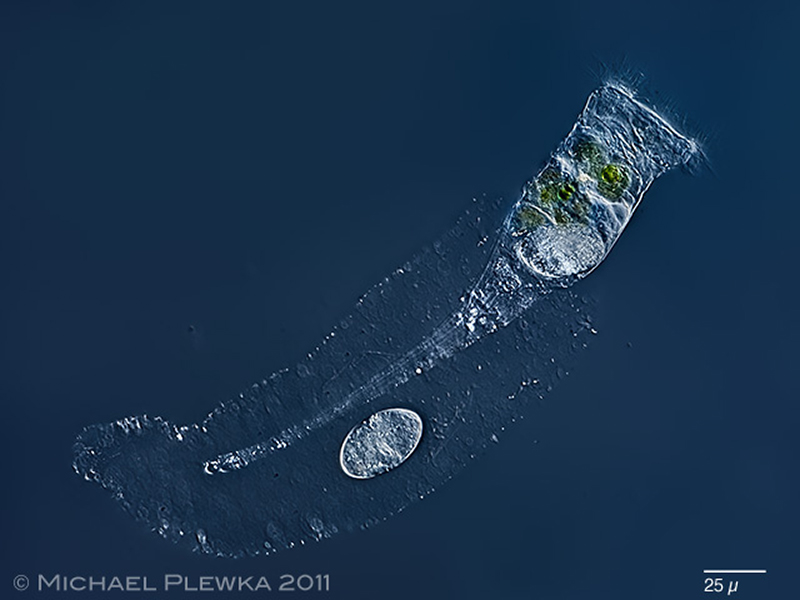 |
| Collotheca pelagica, another specimen with amictic egg. (2) |
| |
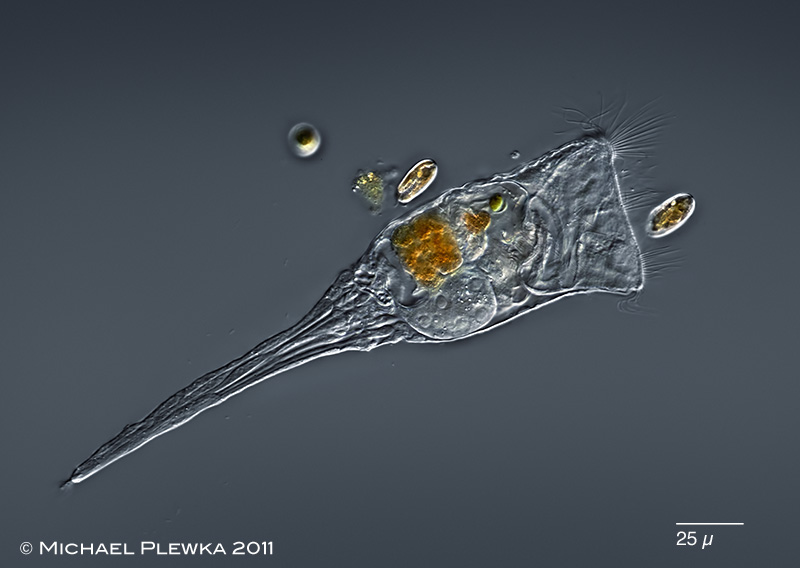 |
| Collotheca pelagica, another specimen, surrounded by 2 cryptomonad flagellates which are prey for this specimen. The coronal cilia seem to be grouped in bundles. Some of them are in recovery beat which is oriented to the posterior side (see below) (2) |
| |
 |
| Collotheca pelagica; the males are distinctly smaller than the females and are mobile, they swim much faster than the females and have eyespots. F: foot; Pe: ciliated penis. (2) |
| |
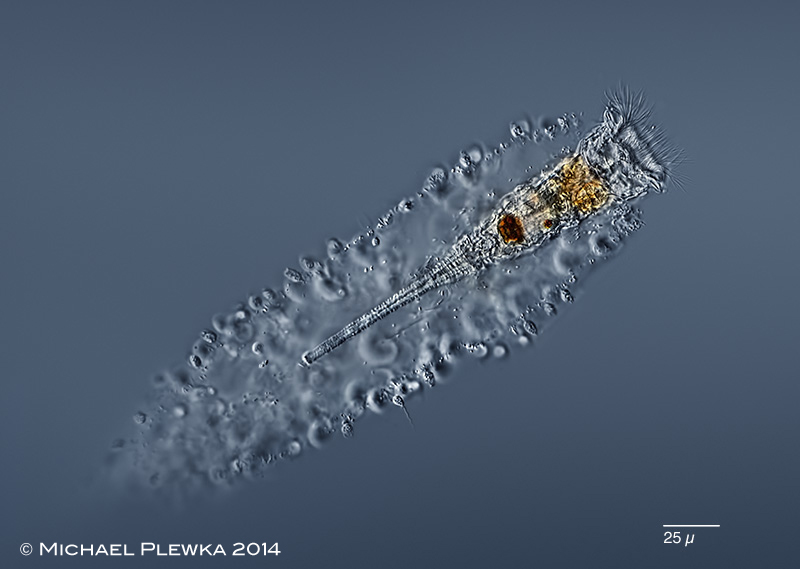 |
| Collotheca pelagica; the mucilaginous sheath offers space for all kinds of epibiontic organisms, usually bacteria. The sheath of this specimen is covered with zooflagellates. (2) |
| |
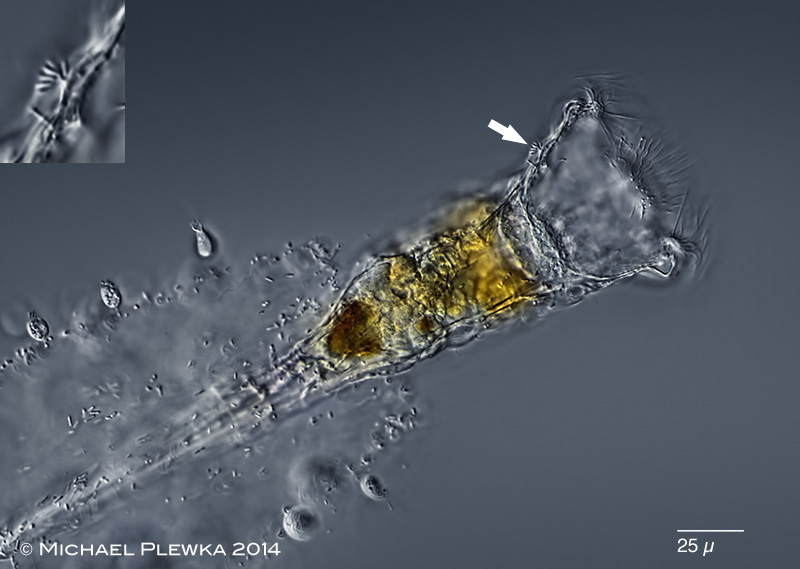 |
| Collotheca pelagica; the arrow points to some tiny bristle-like structures (insert). (2) |
| |
 |
| Collotheca pelagica; optical longitudinal transect showing the sensory cilia in the infundiibulum. (2) |
| |
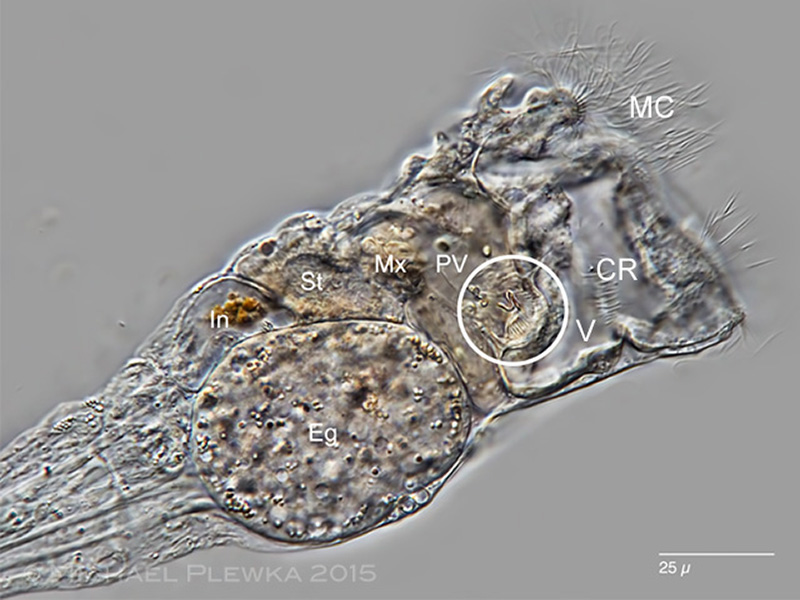 |
| Collotheca pelagica; lateral view of a specimen with slightly contracted corona (caused by vibrations of the camera shutter due to immersion of the 63x/1,4 planapo oil objective), so it is not possible to say where the trochus ends and the vestibulum (V) begins. The prey (small flagellates) is transported to the proventriculus (PV) via an oscillating epipharyngeal system consisting of a ciliated membrane which seems to be enforced by a clasp (or maybe the clasp is only the optical transect of the ciliated membrane) (both inside the white circle). The ciliated membrane looks like the one from the terminal ciliated cells of the nephridial system, for example Asplanchna priodonta. The beating frequency is about 1,5-2 Hz. This system must not be confused with the mastax (Mx) which is located at the end (functionally), i.e. on the left side of the proventriculus in this image. From a video the "chewing frequency" of the mastax could be calculated to 0.5 Hz, so the two systems seem to be not synchronized. In contrast to the liquid in the vestibulum the content of the proventriculus is slightly brownish suggesting that there are already digesting processes going on in the proventriculus. St.:stomach; In: intestinum; Eg: amictic egg; MC: motile cilia; CR: ciliary row. (3) |
| |
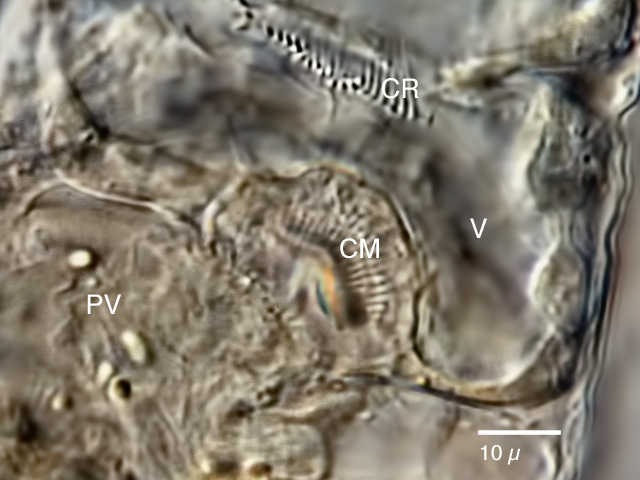 |
| Collotheca pelagica; detail of the epipharyngeal system (the view is turned approx. 55 degrees counterclockwise compared to the above image). CM: ciliary membrane; CR ciliary row; PV: proventriculus; V: vestibulum. (3) |
| |
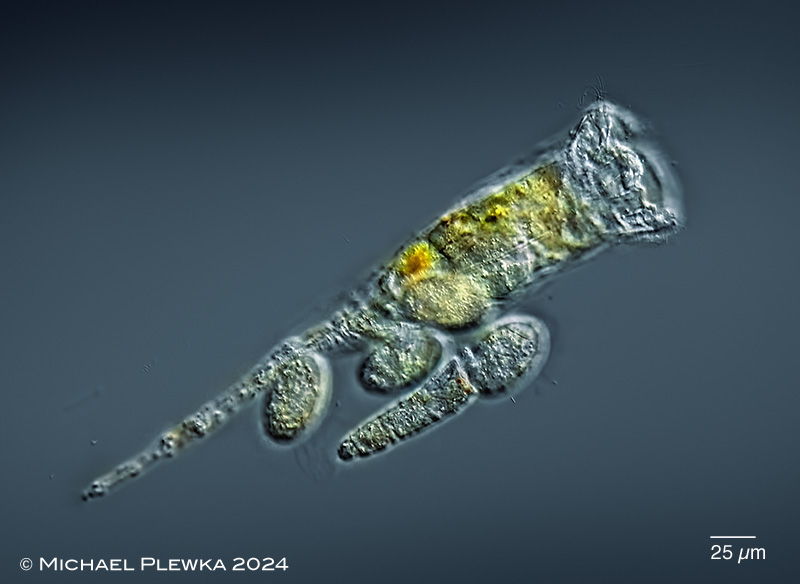 |
| Collotheca pelagica; another specimen from location (4) with four eggs and one male (with red eyespots). This is the only Collotheca-species where the beating of cilia was observed and could be documented. It is remarkable that the effective stroke of the cilia is to the anterior, which is in contrast to most other rotifers except rotifers of genus Conochilus/ Conochiloides (5) |
| |
 |
| Collotheca pelagica; this still image (from of a 300 fps video) shows that the recovery stroke of the cilia (arrow) is directed backwards, whereas the effective stroke is directed to the anterior (arrowheads). This is remarkable because in most other rotifer species the effective stroke is directed backwards, thus resulting is a forward movement. The only other exception are rotifers of the genus Conochilus/ Conochiloides. (5) |
| |
| |
| |
|
| |
|
|
 |
| Location (4); (5): 3-Insel-Teich; Ohligser Heide, Solingen, NRW, Germany, NRW, Germany, pond; |
| |
| Habitat (4); (5): plankton |
| |
| Date: 18.08.2015 (4); coll.: 14.10.2024, img: 16.10.2024 (5) |
| |
|
|
|
|
|
| |
| |
| Location: Maastricht, NL, Monseigneur Nolenspark, pond (1); Hohes Venn (2); Hattingen Felderbachtal, pond (3) |
| Habitat: Plankton (1,2,3) |
| Date: 8.10.2011 (1); 28.10.2011 (2); 20.09.2014 (3); |
|
|
|